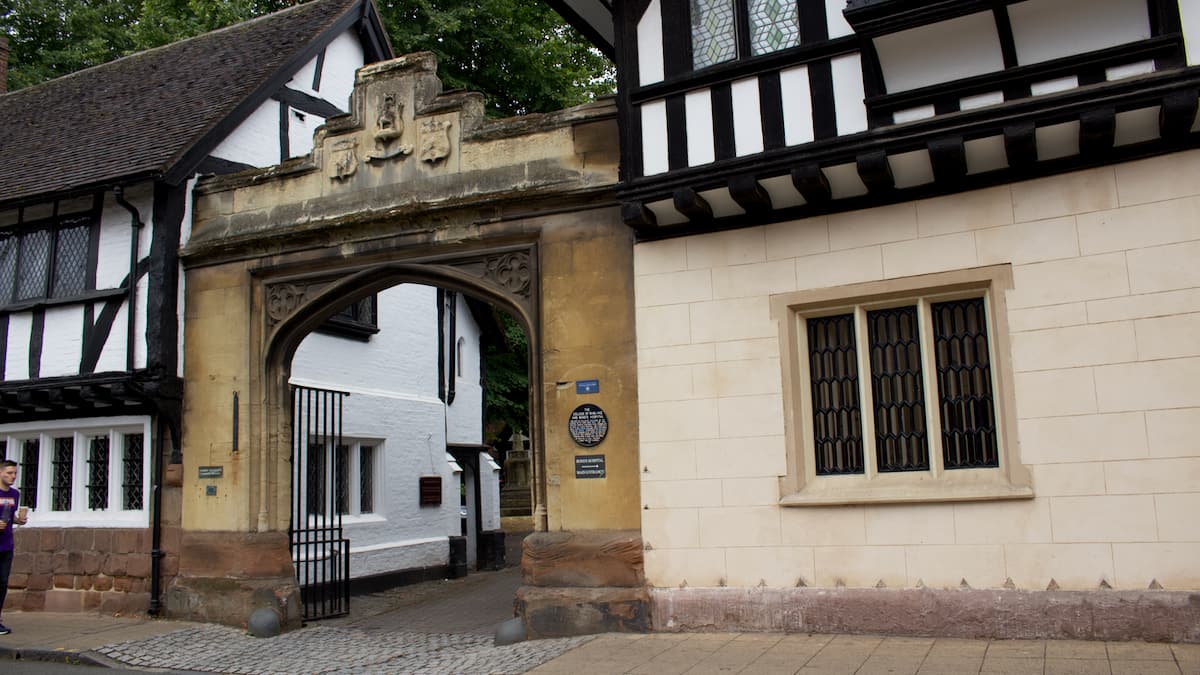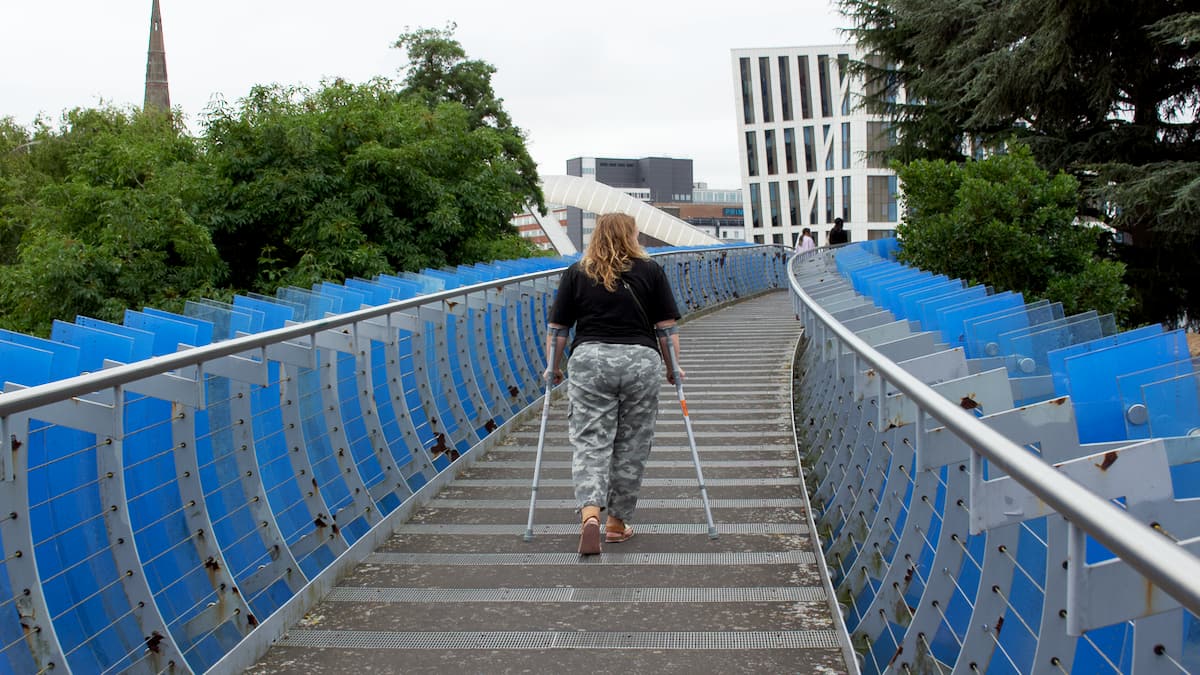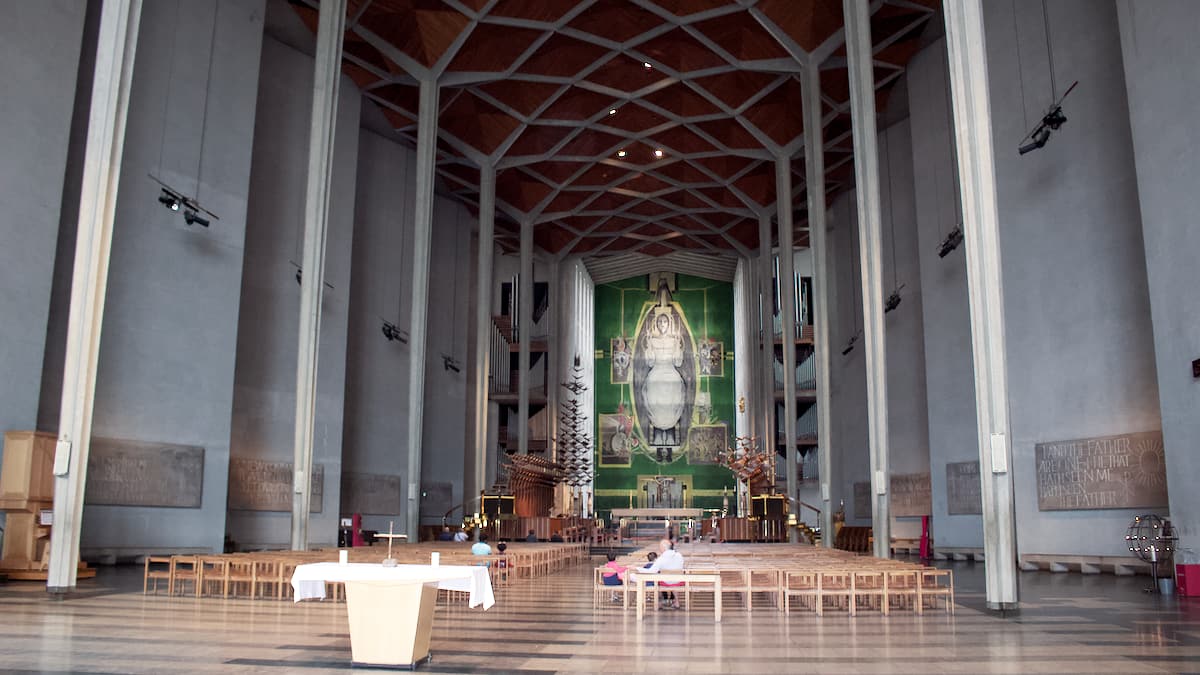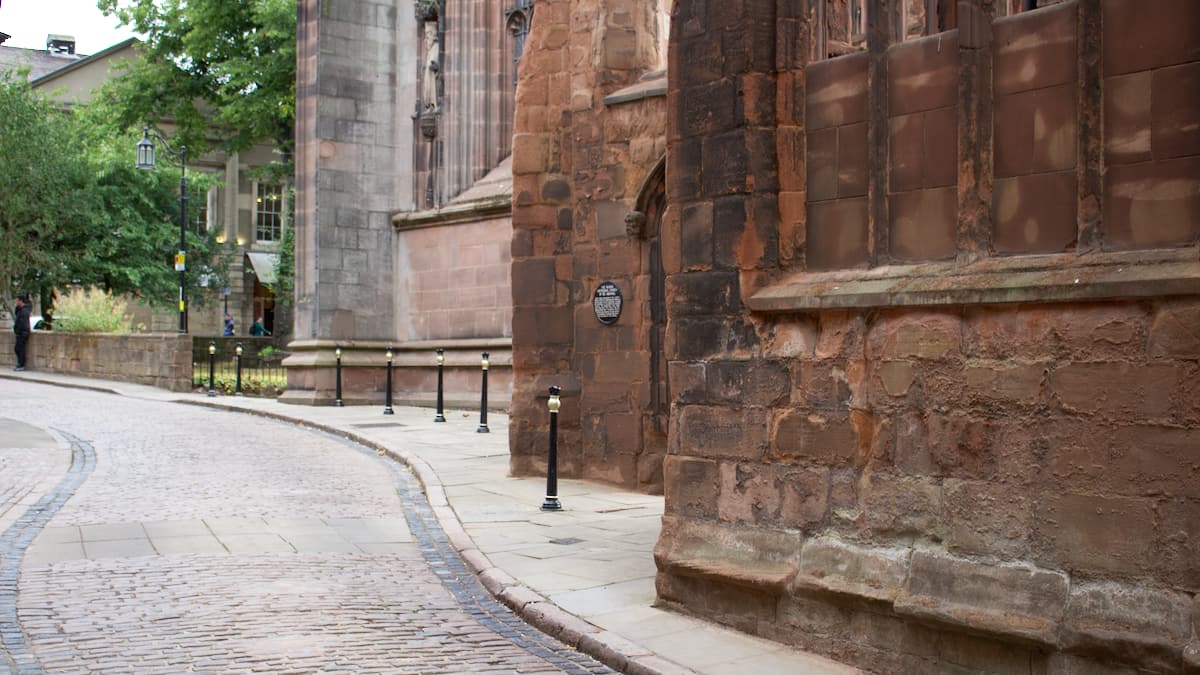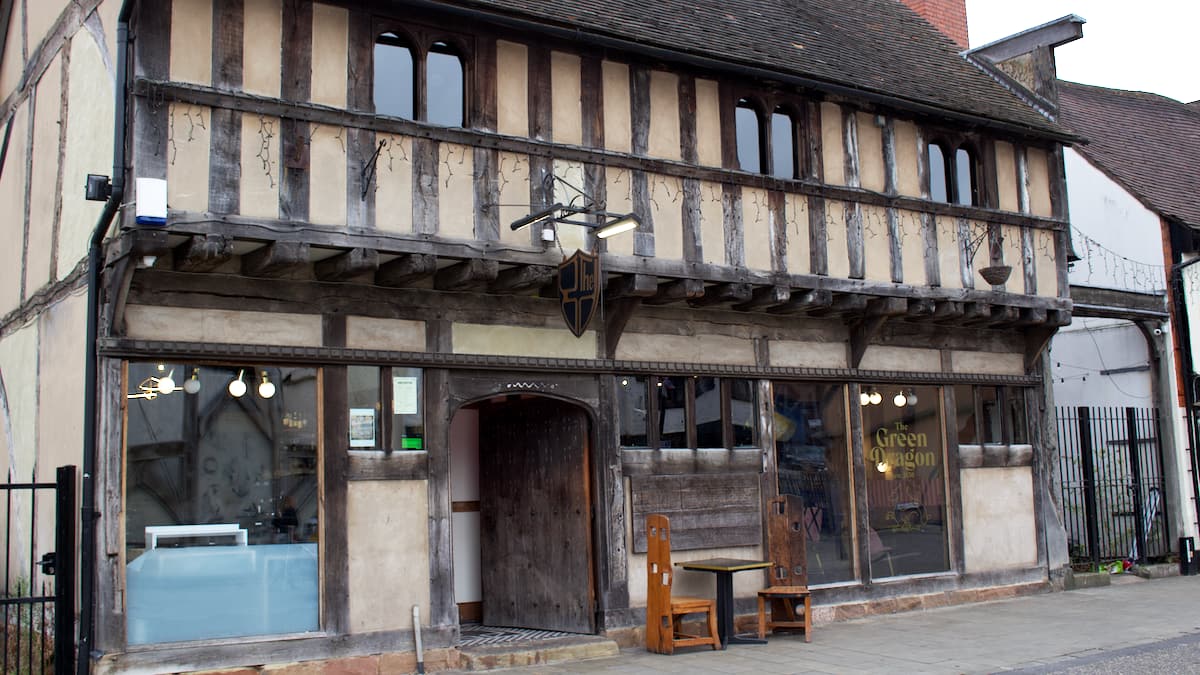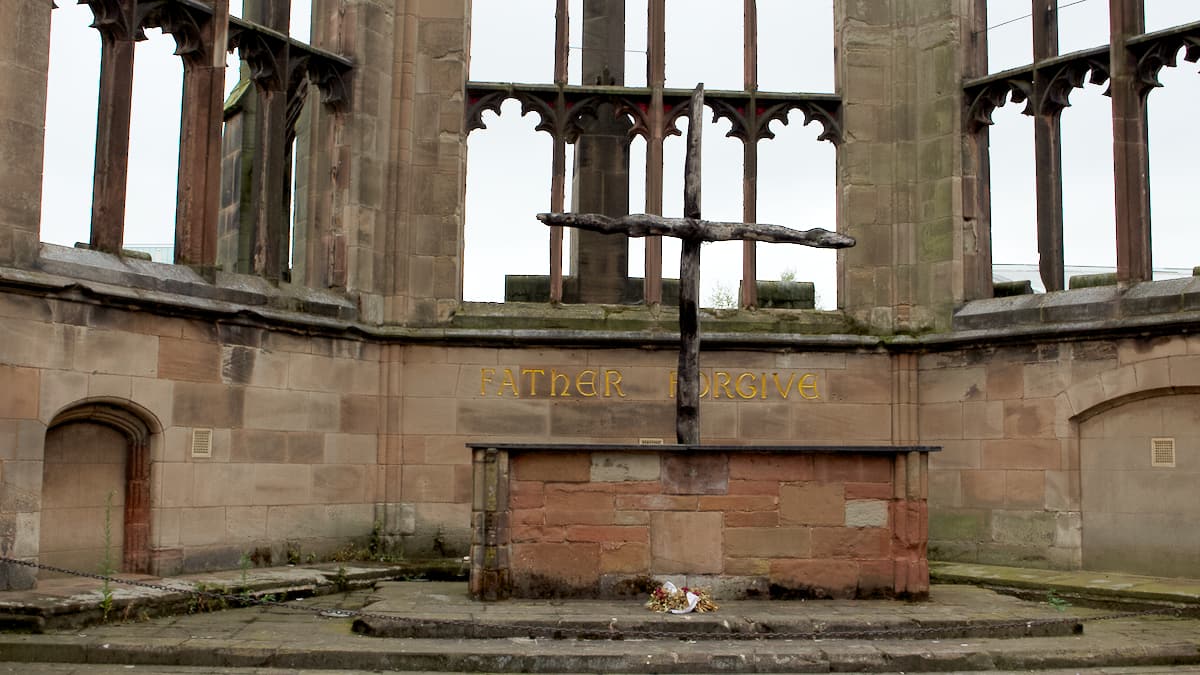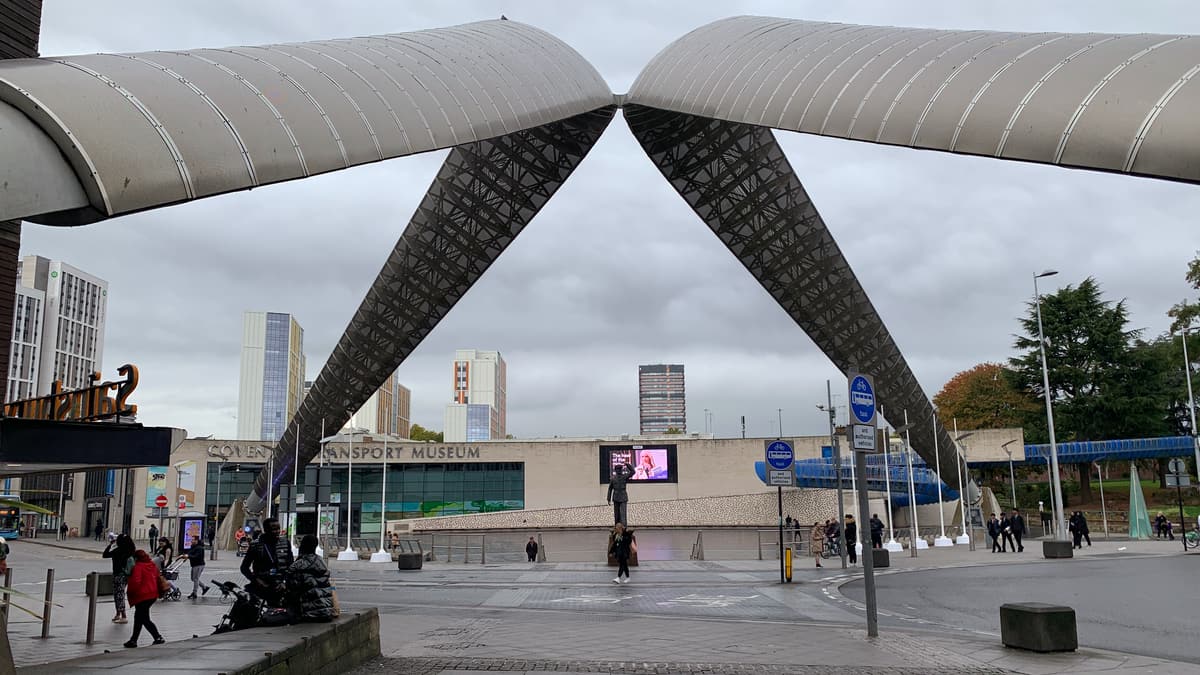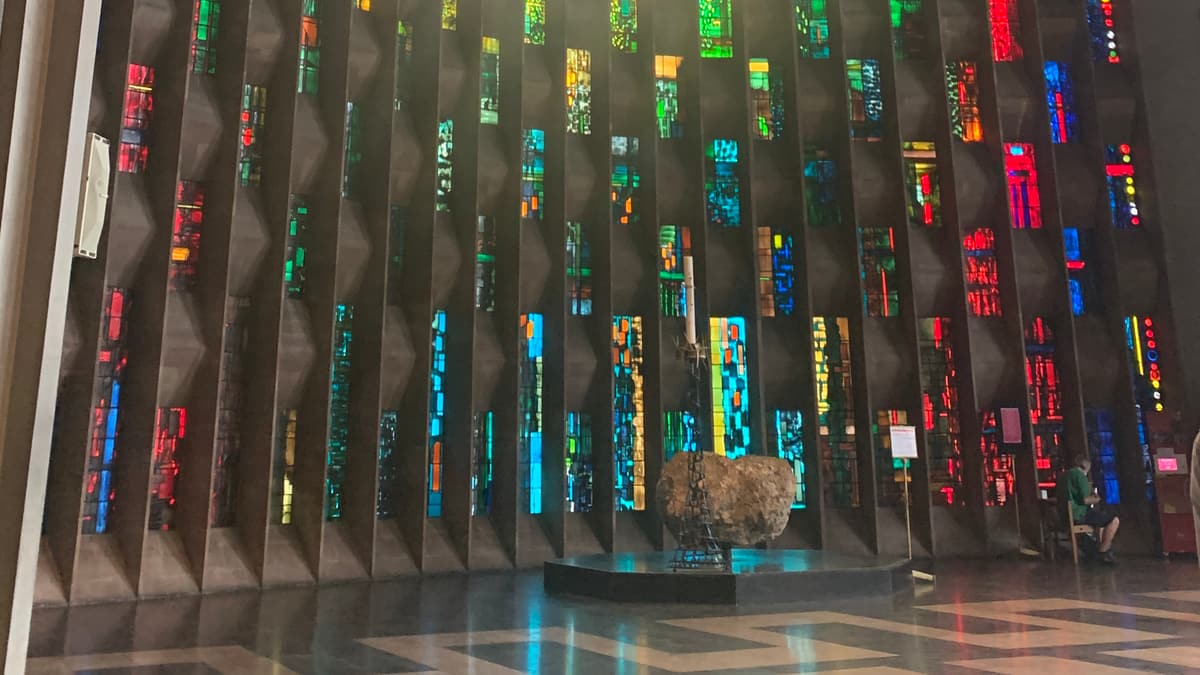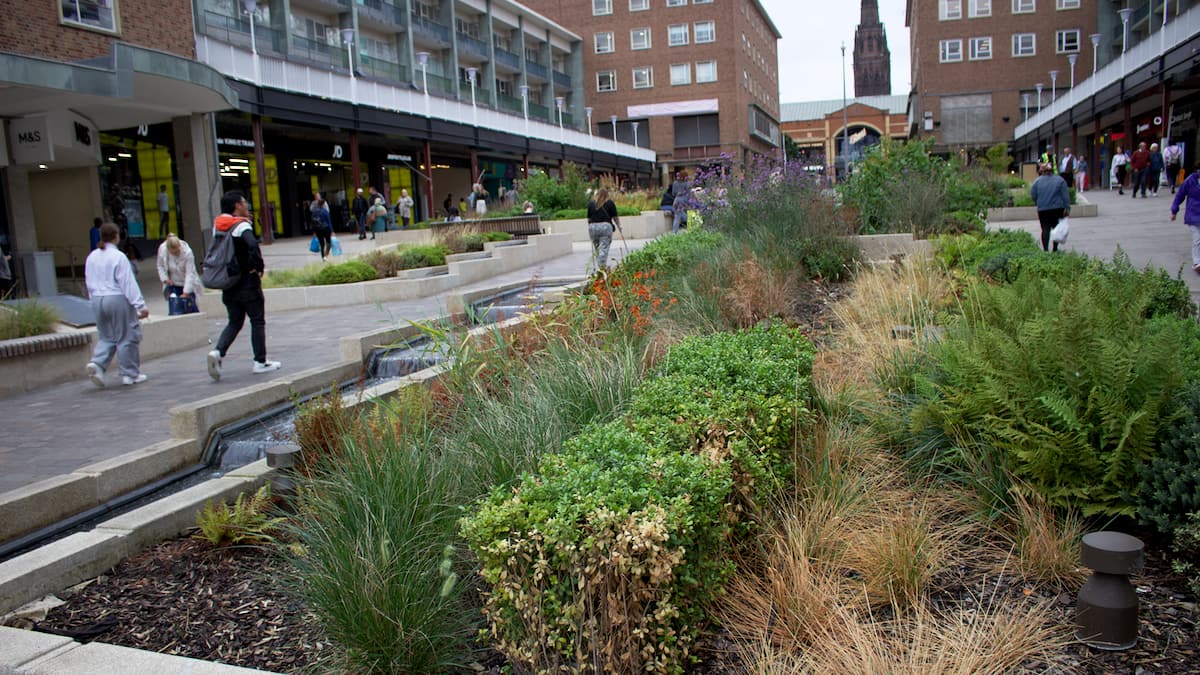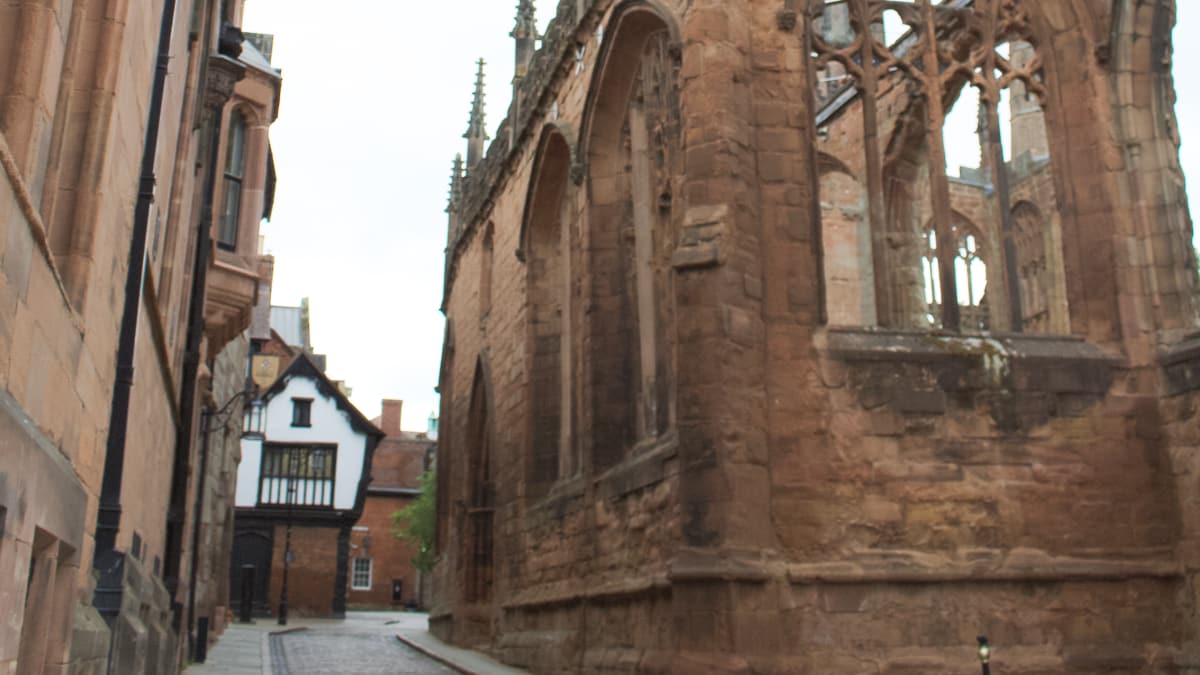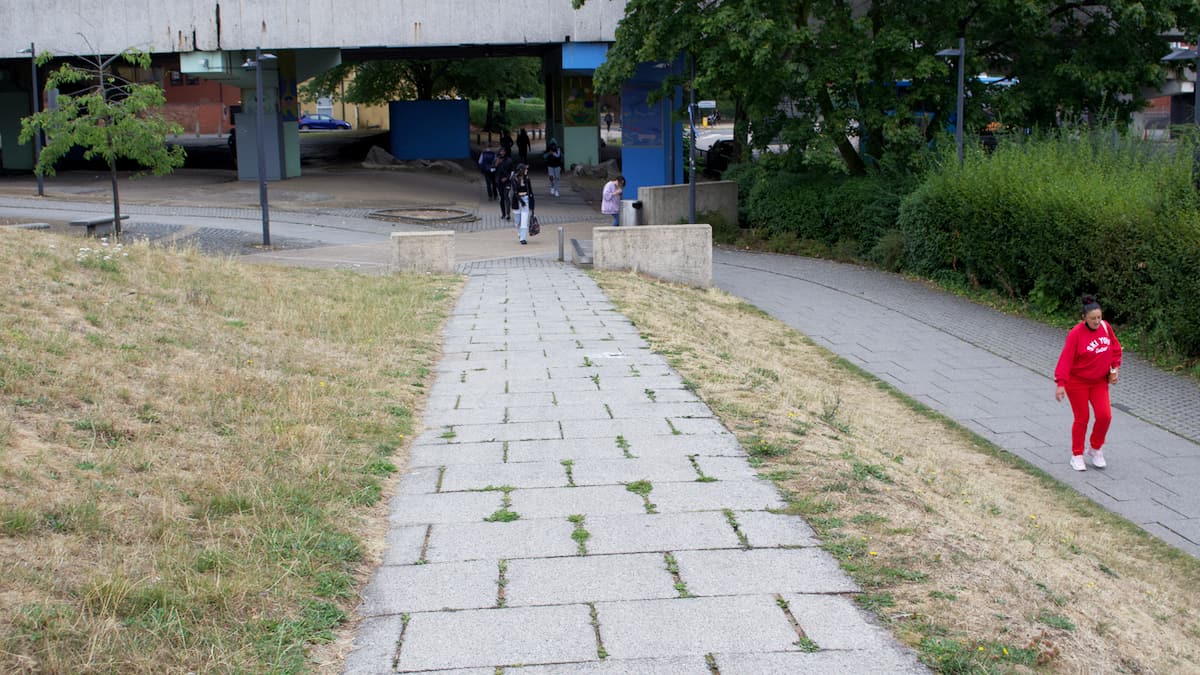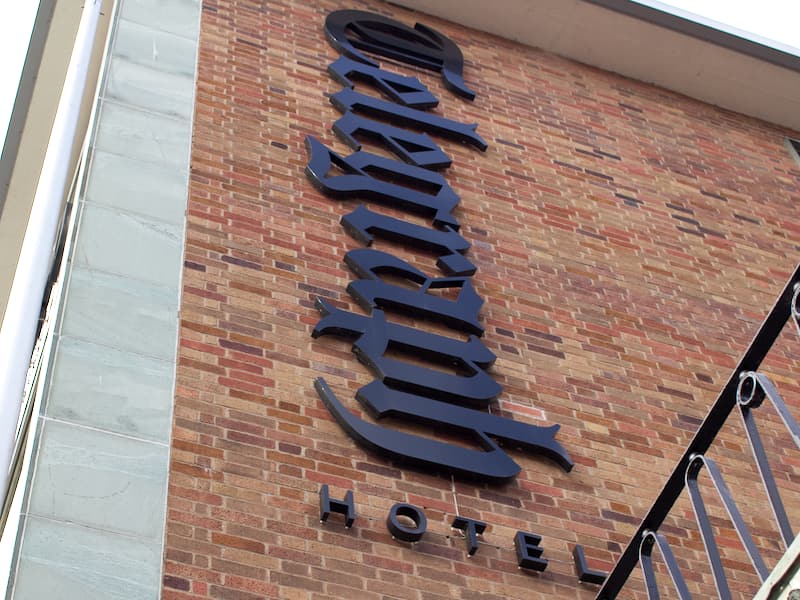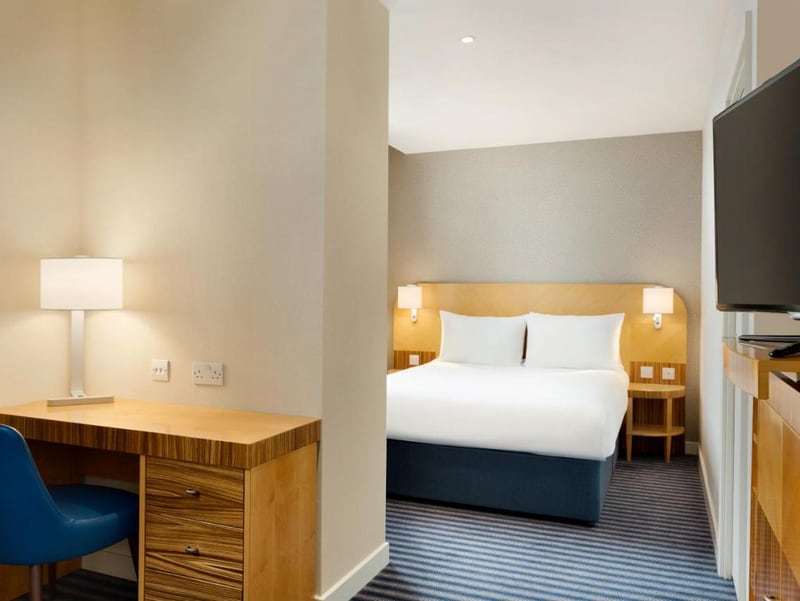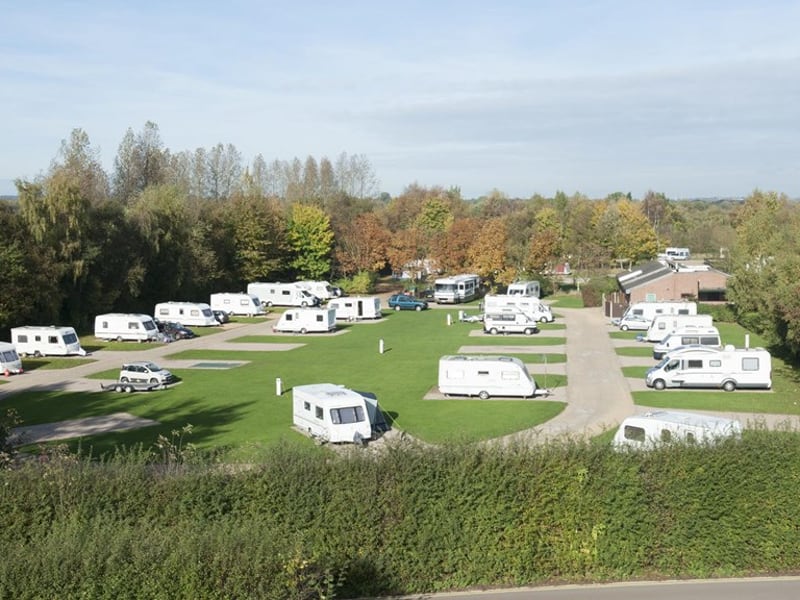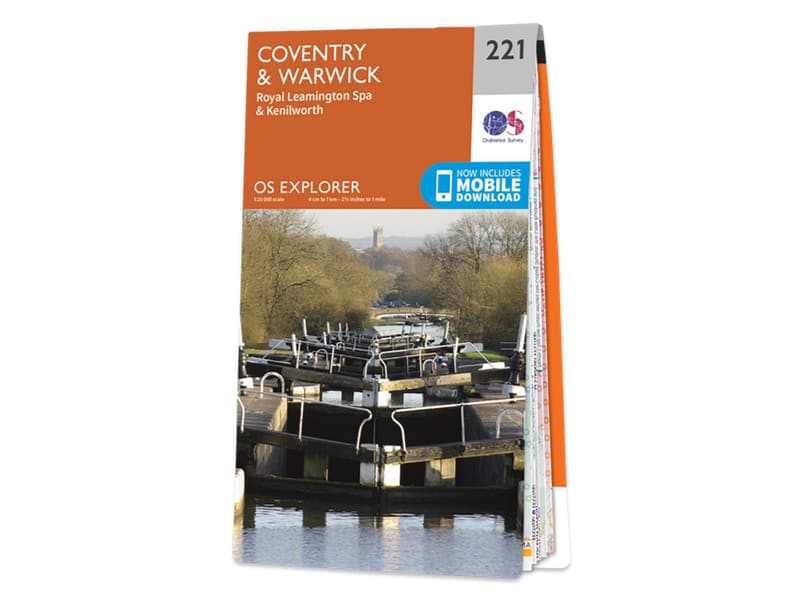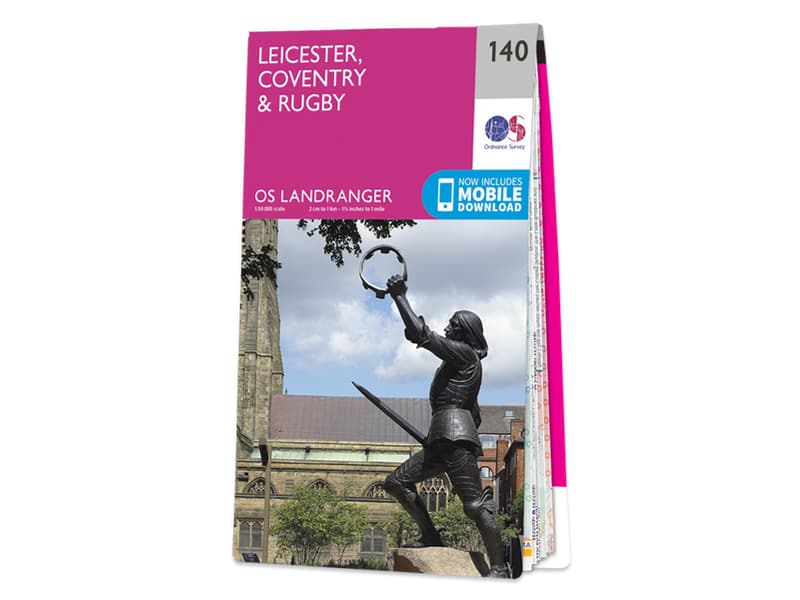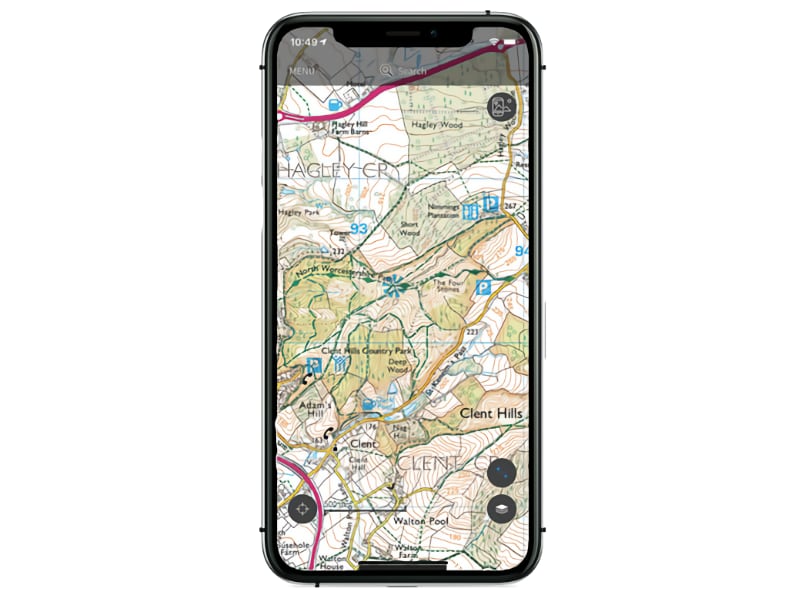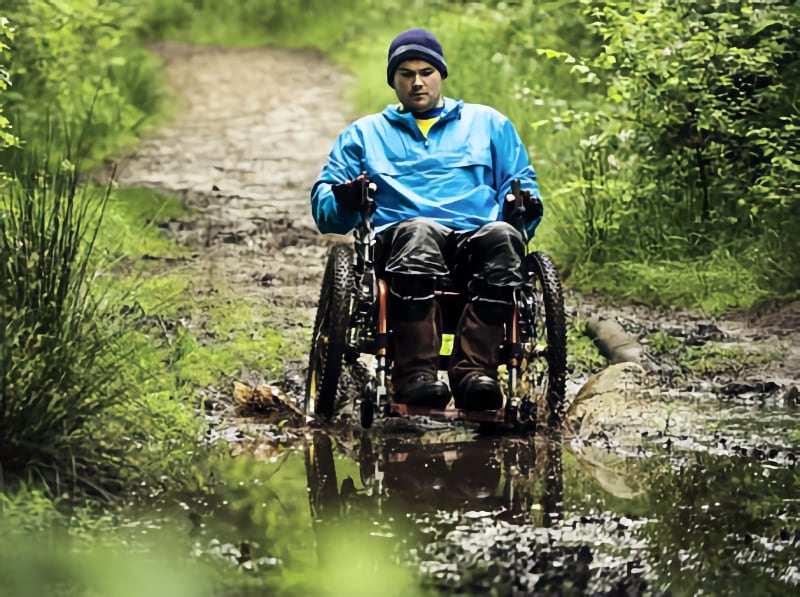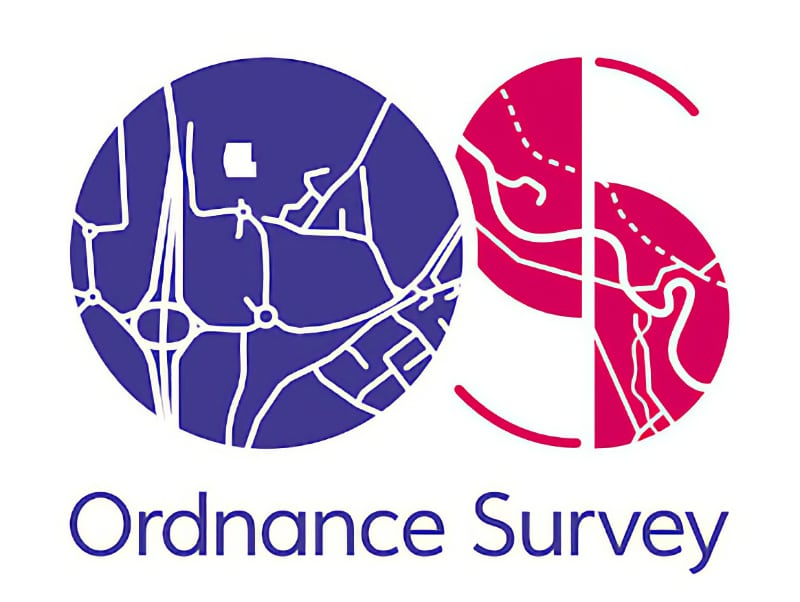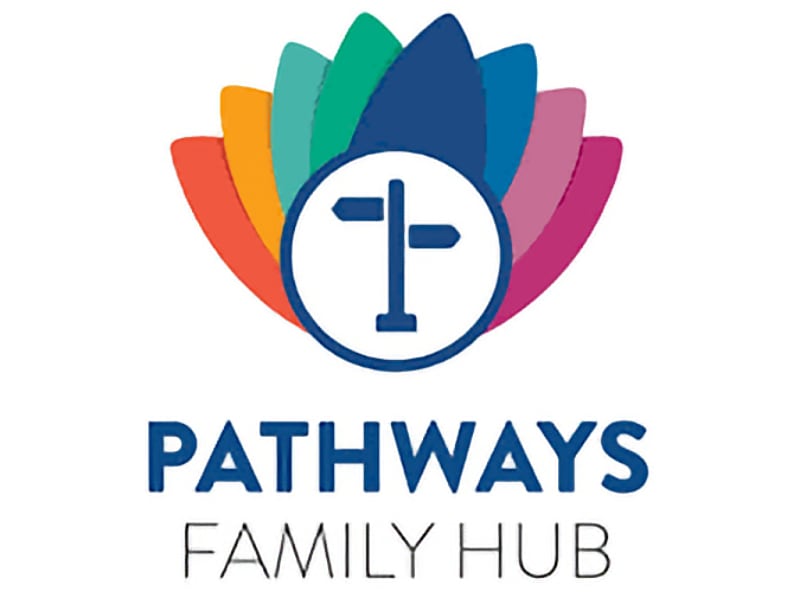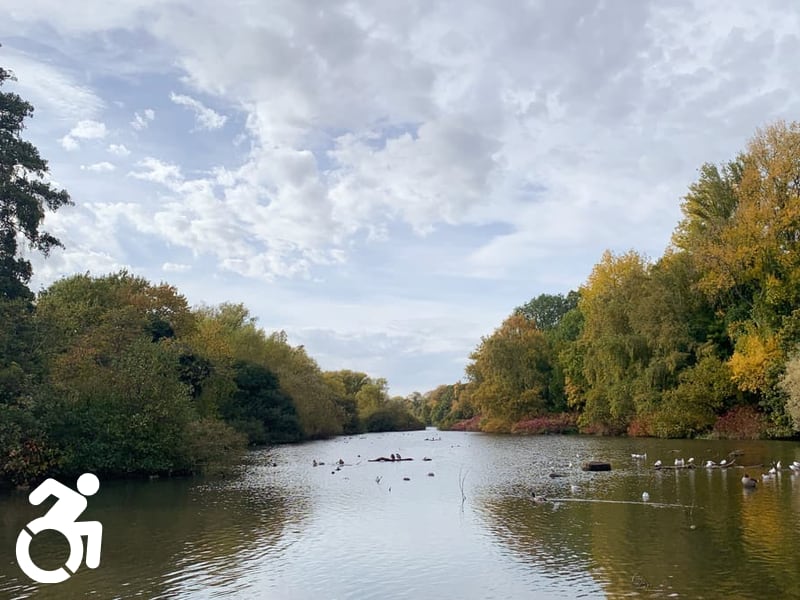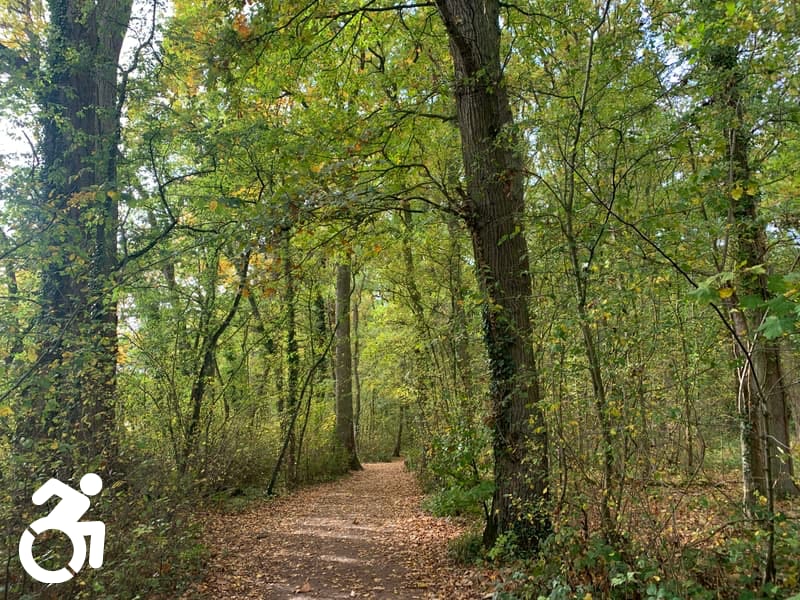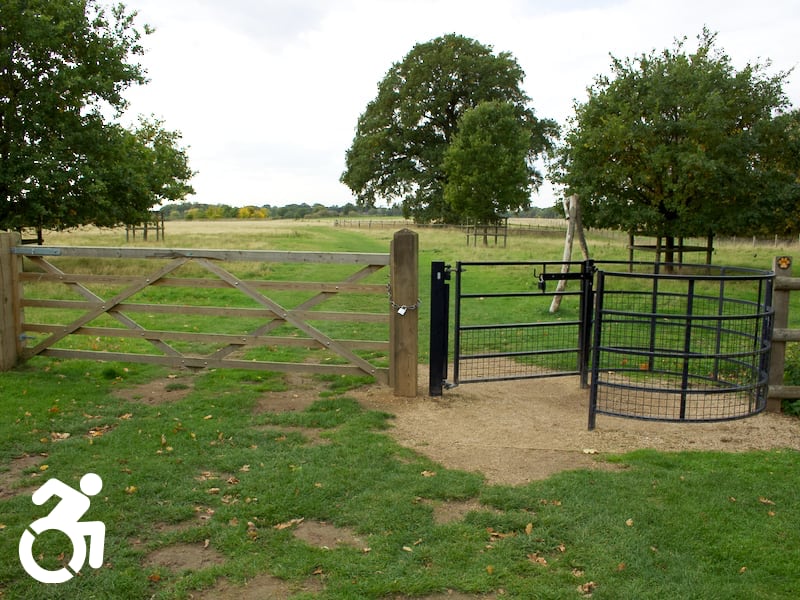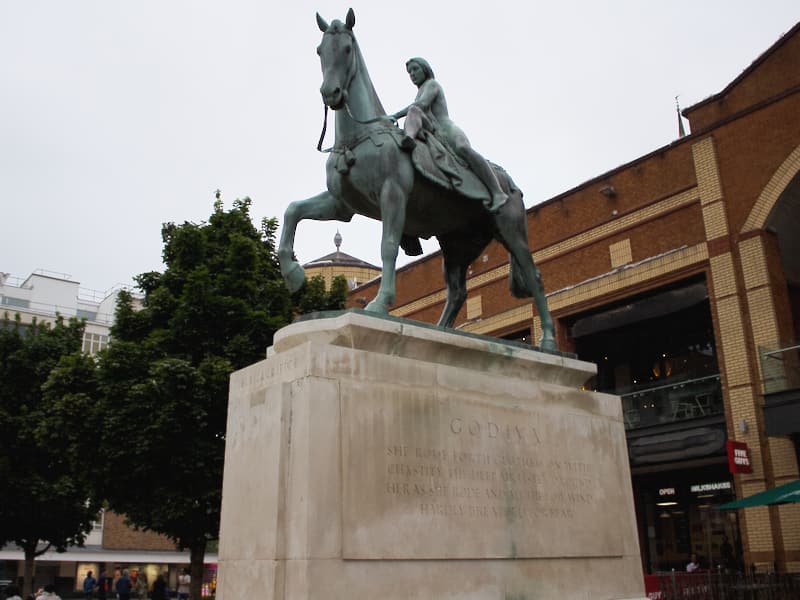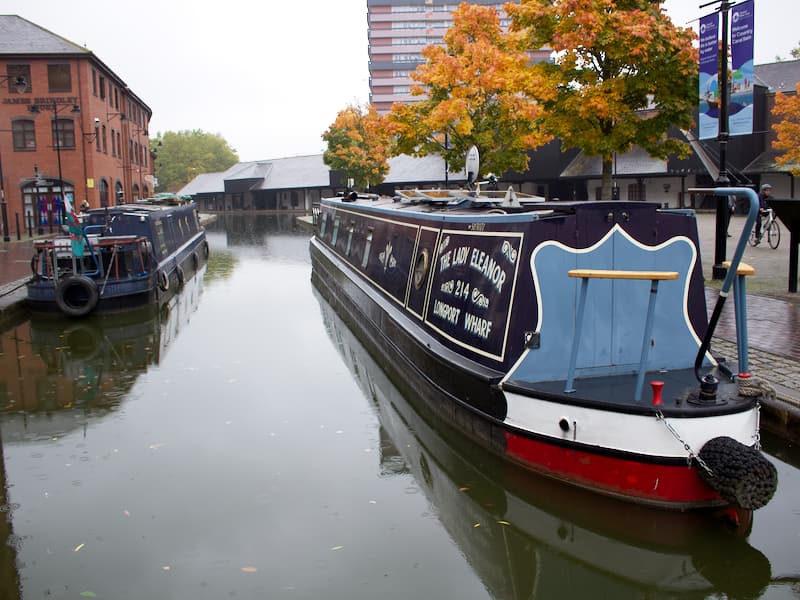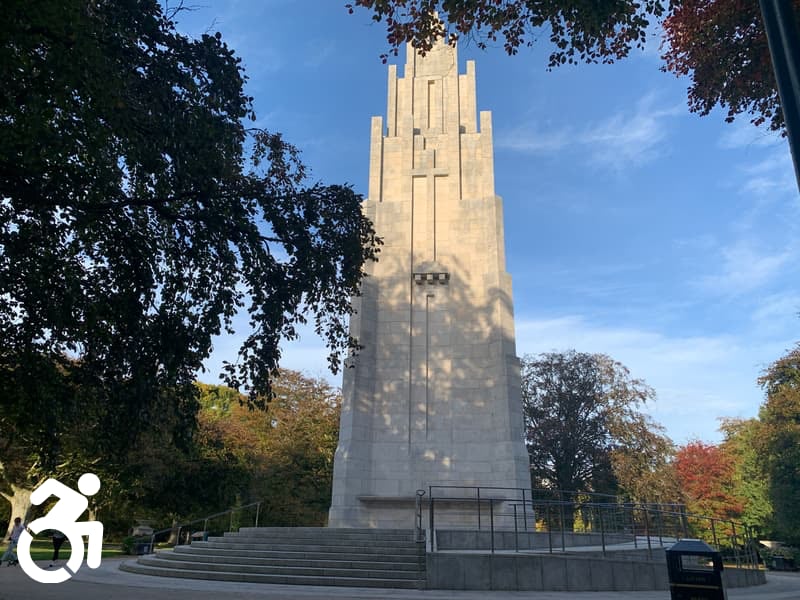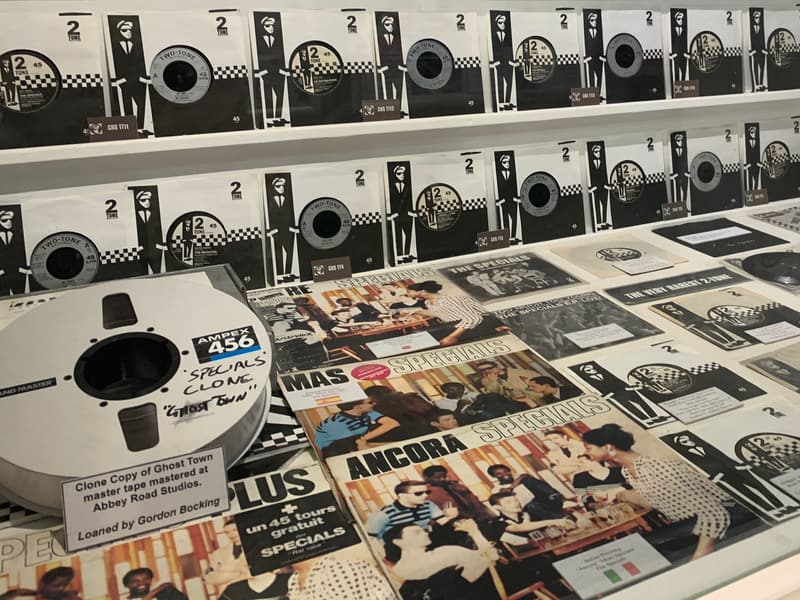- Home
- All Walks · Walking Routes
- Destination Coventry Walks
- Historic Coventry – Accessible route
Walk Details
There’s a lot of history in the heart of Coventry and this walk gives you the opportunity to take in some of the older parts of the city.
Although the route suggests about an hour – you may want to allow for longer to give you more time to explore some of the places along the way.
Our walk starts on New Union Street, outside The Wave. Here you’ll see the remains of a spire. Now a bar, this was Christchurch Spire – one of the three spires that Coventry was famed for (we’ll see the other two later on on our walk).
From here we follow New Union Street, past The Wave and turn left onto Greyfriars Lane. Following the road round, on the right you’ll see Fords Hospital – an Almshouse for old women, sometimes known as Grey Friars Hospital, this is considered one of the most beautiful specimens of Elizabethan architecture in the UK. In 2014/15 it went through a major renovation and is still offering sheltered accommodation.
Taking a right turn along Salt Lane we continue to the end of the road and take a left onto Little Park Street. Ahead of us are the impressive looking buildings for Coventry City Council – in Tudor Revival style, it was built in the early 20th century to replace St Mary’s Guildhall as the headquarters of the mayor and city corporation. And St Mary’s Guildhall is our next stop as we walk past the Council House and take a left up St Marys Street.
As you approach the top of St Marys Street you’ll see St Mary’s Guildhall to your left. Believed to have been built in around 1430, it was originally for the use of the United Guilds of the Holy Trinity, St Mary, St John the Baptist, and St Catherine. It is possible to go into St Mary’s Guildhall and learn more about Coventry’s historical seat of power and debate.
Opposite St Mary’s, on the right as you come to the top of St Marys Street is Drapers Hall. The Grade II* listed Drapers’ Hall is one of the few Regency buildings in the city and was built in 1831-2 as the headquarters of the Coventry Drapers’ Guild. It has since been repurposed to be a music venue.
At this point you can’t help but also notice the ruins of Coventry Cathedral in front of you. This is where we are headed next. It was on 14th November 1940 that Coventry was blitzed by the Germans in the second world war. The cathedral was one of many buildings in the city that got destroyed that night. The accessible route into the cathedrals is back up past St Mary’s Guildhall. Going around the back of the spire there is an accessible way into the ruined cathedral. To get into the new cathedral you’ll need to go out of the ruined cathedral and then around onto St Michaels Avenue that takes you between the two.
No matter your religion, we highly encourage you to take some time in both the ruined cathedral to your left and the new cathedral to your right. In the ruined cathedral you can also climb the spire (which amazingly was unscathed in the blitz) – and is the second of the famous three spires of Coventry. You’ll also see the cross made from charred timbers that came from the rubble after the blitz – a symbol of peace and reconciliation that the city holds so dear. In the new cathedral you’ll see many gifts that were given to the city following the second world war from nations across Europe and further afield in a spirit of unity.
When you’re ready, we continue along St Michaels Avenue, away from the direction we came, until we come to another church. This one is Trinity Church and the spire is the third of the three spires of Coventry. You can walk either way around the church, pausing for a moment to go in if you wish, before going down on to Trinity Street where we turn right.
At the end of Trinity Street we come to the Whittle Arch – installed in 2003 to celebrate the life of Sir Frank Whittle, inventor of the turbo jet engine, who had been born in the city. Heading right /straight on along Hale Street, we need to cross over the road to get to Swanswell Gate. Formally known as Priory Gate, and completed in 1440, this is part of the old city walls. It’s one of only two gates that remain. Behind the gate is our next destination – Lady Herbert’s Garden.
Lady Herbert’s Garden is a public garden designed and laid out in the 1930s as a memorial garden to the wife of the Coventry industrialist, Sir Alfred Herbert. It lies near the city’s ancient gates and incorporates part of the mediaeval city wall. Whilst steps in the park make it inaccessible for wheelchairs, there is a walkway that runs across the top of it and offers lovely views of the gardens and old city walls. Access the walk way by going past the garden and gate (towards the ring road) and then follow it back towards the Coventry Transport Museum.
At the end of the walkway, on your right hand side, will be the Coventry Transport Museum, home to the largest publicly owned collection of British vehicles on the planet and tells the story of a city which changed the world through transport. It’s certainly worth a visit!
As you come out of the Transport Museum – we’re heading right along Hales Street, which will become Corporation Street until we get to Belgrade Square. The Belgrade Theatre is one of the finest producing theatres in the country and was a gift to the people of Coventry from the people of Belgrade in the former Yugoslavia after the second world war. You can either cross over the square in front of the theatre, or go inside for a quick refreshment before continuing on with the walk.
At the backdoor of the theatre we’re turning left and walking along Bond Street, past the Town Wall Tavern. At the end of the road, directly in front of us is Bond’s Hospital and the old Bablake School. Bond Hospital was a foundation for old men that was instituted in 1506 by Thomas Bond, a draper of Coventry. Like Fords Hospital, the building has been through a renovation inside and is still used as almshouses and sheltered accommodation today. Bablake School, endowed in 1566 by Thomas Wheatley has since been amalgamated with other charity schools from the city into a more modern building slightly further away.
We’re turning left onto Hill Street, in front of Bonds Hospital and heading back down onto Corporation Street where , on our right is St John the Baptist Church. We’re heading around the other side of this church onto Fleet Street which becomes Spon Street. Sometimes referred to as Historic Spon Street, this is a street of Tudor buildings – many of which are original to this street, others have been saved from demolition in other streets and rebuilt here to ensure their survival. There are 31 listed buildings along here (including the church). Take some time to wander up and down the street, exploring the shops or eateries. When you’re ready – head back towards the church, crossover Corporation Street and go into the Lower Precinct. This is the shopping district of the city. As you come out from under the glass cover and into the open shopping precinct – keep walking straight on, following The Precinct, into the Upper Precinct. Keep an eye out for the Phoenix that’s on the ground – representative of how the city rose again from the flames of the blitz in November 1940. As we come up through the Upper Precinct we get to Broadgate. If you time it right – you want to be here on the hour.
On the south side of Broadgate (to your right as you enter) you’ll see the Godiva Clock. Depicting one of the most famous stories to come from the city, on the hour the gates open and Lady Godiva riding naked on her white horse comes round from the right door and goes back in through the left. Above, another window opens and Peeping Tom comes out for a quick look, covers his eyes and goes back in again.
To the left of the clock you’ll see a walkway down into Hereford Street. We’re going to go down here … straight to the end where we find ourselves back where we started at Christchurch Spire.
 Nearest Train (or tube) Station(s):
Nearest Train (or tube) Station(s):
Coventry (0.4 mile)
Local Area
Read the Countryside Code before venturing out
Make sure to take a map and compass, and know how to use them before going into our National Parks #BeAdventureSmart
Tips for New Walkers: click here to download (PDF).
Remember to prepare properly before heading out on any type of walk or outdoor activity. Tell people where you are going and what time you are expected back. As Wainwright says "There's no such thing as bad weather, only unsuitable clothing".


